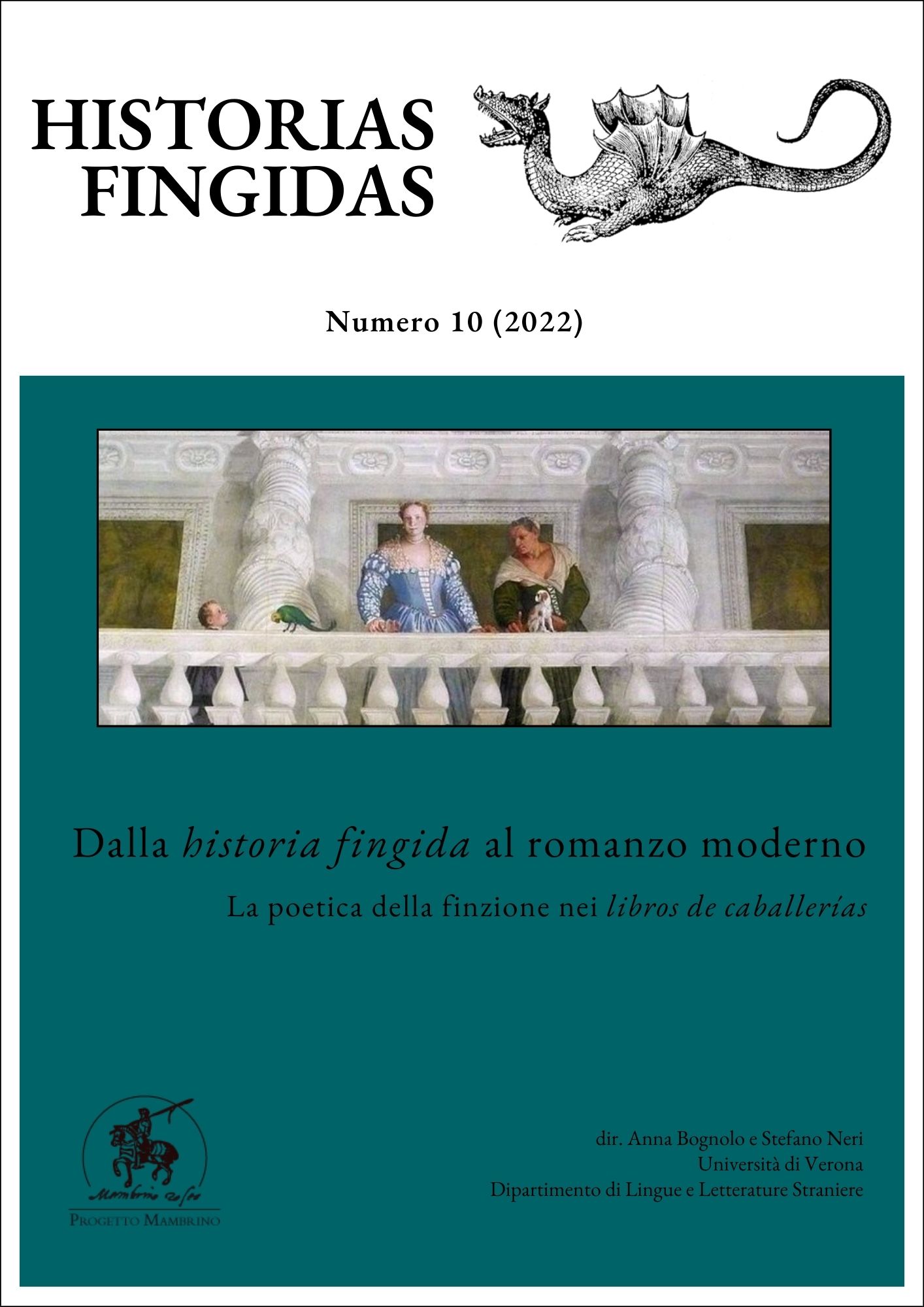Figuras y contrafiguras de la Anunciación en los primeros libros de caballerías: escenas de alcoba y avisos angélicos de concepción extraordinaria
DOI:
https://doi.org/10.13136/2284-2667/1266Ключевые слова:
Anunciación, iconografía medieval, ficción caballeresca, Baladro del sabio Merlín, Tristán de Leonís, La Celestina, Tirant lo BlancАннотация
El artículo examina el papel decisivo que tuvieron que ejercer las Anunciaciones pintadas durante los siglos XIV y XV sobre escenas de alcoba descritas y, a veces, iluminadas en textos de ficción, doctrinales o científicos. Entre los enseres pintados de la habitación de la Virgen María destaca el lecho (thalamus Virginis) por su significado mariológico y cristológico. De manera que la imagen del anuncio de Gabriel a María, con el trasfondo de ese thalamus, sirvió también como modelo para imaginar e ilustrar anuncios o avisos de concepción extraordinaria efectuados por espíritus, ángeles o demonios. Se examinan algunos de los casos más destacados de estos textos e imágenes en los primeros impresos castellanos del Baladro del sabio Merlín o Tristán de Leonís, entre otros, y se propone que las contrafiguras de la Anunciación pueden captarse también en episodios sacro-profanos de otras obras de ficción, como La Celestina y Tirant lo Blanc.
Загрузки
Опубликован
Выпуск
Раздел
Лицензия
Copyright (c) 2022 Rafael Beltrán

Это произведение доступно по лицензии Creative Commons «Attribution-NonCommercial» («Атрибуция — Некоммерческое использование») 4.0 Всемирная.
Gli autori che pubblicano su questa rivista accettano le seguenti condizioni:- Gli autori mantengono i diritti sulla loro opera e cedono alla rivista il diritto di prima pubblicazione dell'opera, contemporaneamente licenziata sotto una Licenza Creative Commons - Attribuzione - Non Commerciale che permette ad altri di condividere l'opera indicando la paternità intellettuale e la prima pubblicazione su questa rivista a fini non commerciali .
- Gli autori possono aderire ad altri accordi di licenza non esclusiva per la distribuzione della versione dell'opera pubblicata (es. depositarla in un archivio istituzionale o pubblicarla in una monografia), a patto di indicare che la prima pubblicazione è avvenuta su questa rivista.
- Gli autori possono diffondere la loro opera online (es. in repository istituzionali o nel loro sito web) prima e durante il processo di submission, poiché può portare a scambi produttivi e aumentare le citazioni dell'opera pubblicata (Vedi The Effect of Open Access).

